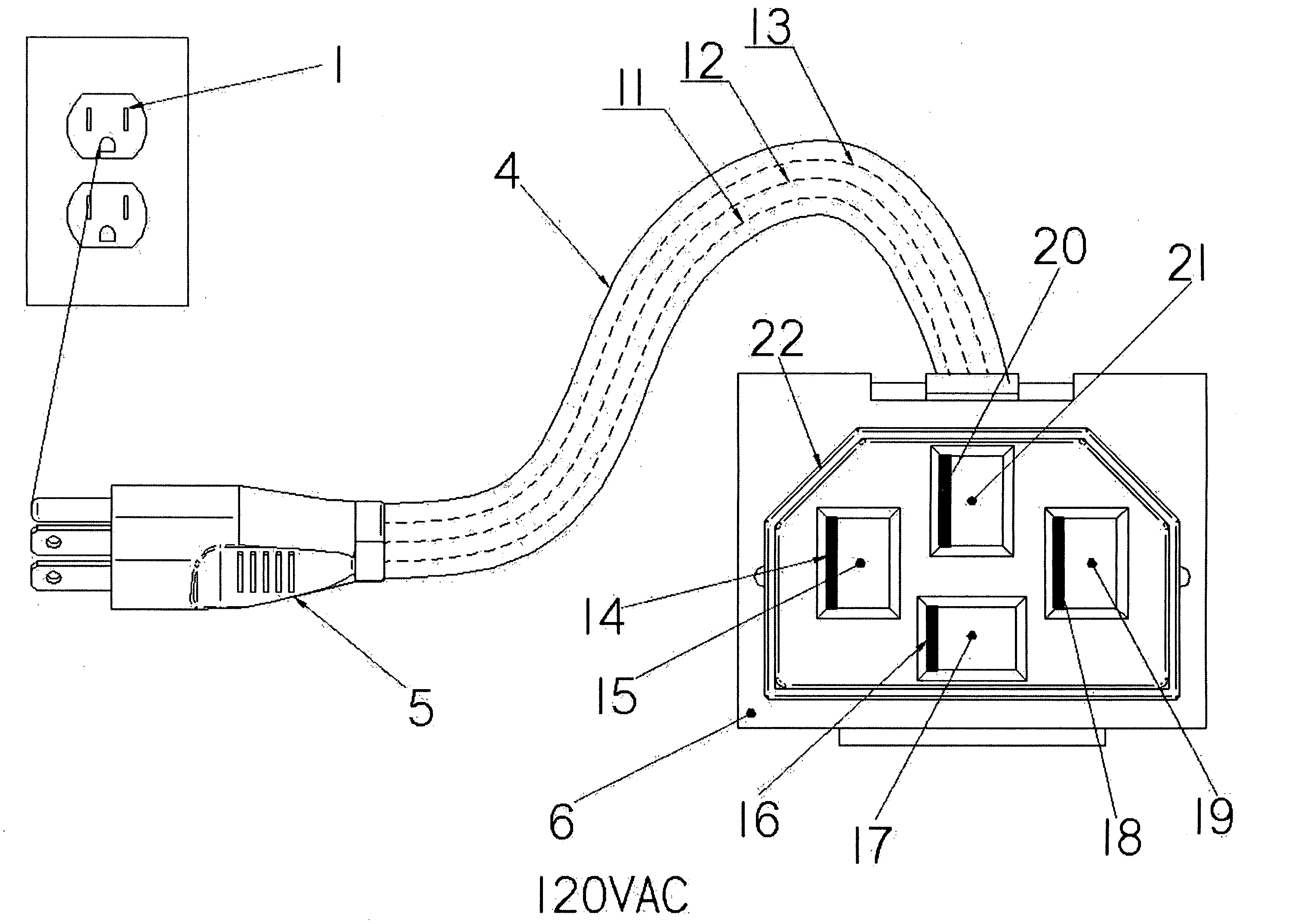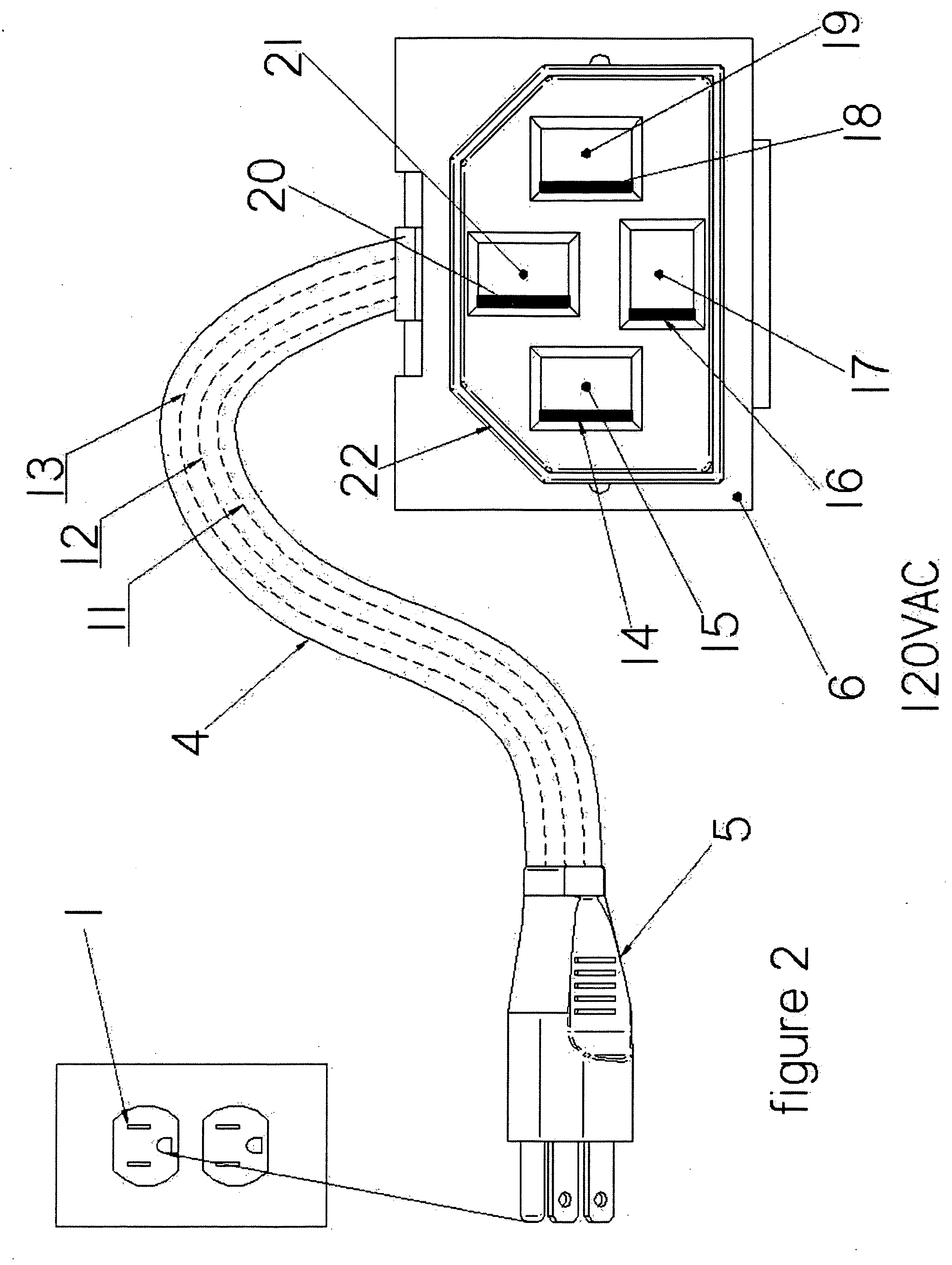Universal electrical plug and socket
a multi-prong, plug-in technology, applied in the direction of coupling device connection, coupling protective earth/shielding arrangement, electric discharge lamps, etc., can solve the problems of inability to adapt the power cord, the extension cord receptacle cannot facilitate a voltage change, and the electrical device with which the plug is associated is ungrounded, etc., to achieve convenient production, simple, reliable, and inexpensive
- Summary
- Abstract
- Description
- Claims
- Application Information
AI Technical Summary
Benefits of technology
Problems solved by technology
Method used
Image
Examples
Embodiment Construction
[0035] Referring now to the drawings, and particularly to FIGS. 1-5, a preferred embodiment of the present invention is shown, illustrating the universal electrical plug and socket configured for use in either a 120VAC or 240VAC service voltage.
Description FIG. 1:
[0036]FIG. 1 illustrates one embodiment of the present invention facilitating electrical connection of an electrical device 5, to two different potential service voltages and wall socket configurations, one being 120VAC 1 and the other being 240VAC 2. The 120VAC power cord assembly 4 has on one end a standard 120VAC wall socket plug 3, and on the other end the universal plug 6. The 240VAC power cord assembly 7 has on one end a standard 240VAC wall socket plug 8, and on the other end the universal plug 9. The universal plug 6 and the universal plug 9 are identical, both fittingly insertable into universal socket 10.
[0037] Being of simple design and elegant utility, the end user selects the power cord to match the desired...
PUM
 Login to View More
Login to View More Abstract
Description
Claims
Application Information
 Login to View More
Login to View More - R&D
- Intellectual Property
- Life Sciences
- Materials
- Tech Scout
- Unparalleled Data Quality
- Higher Quality Content
- 60% Fewer Hallucinations
Browse by: Latest US Patents, China's latest patents, Technical Efficacy Thesaurus, Application Domain, Technology Topic, Popular Technical Reports.
© 2025 PatSnap. All rights reserved.Legal|Privacy policy|Modern Slavery Act Transparency Statement|Sitemap|About US| Contact US: help@patsnap.com



